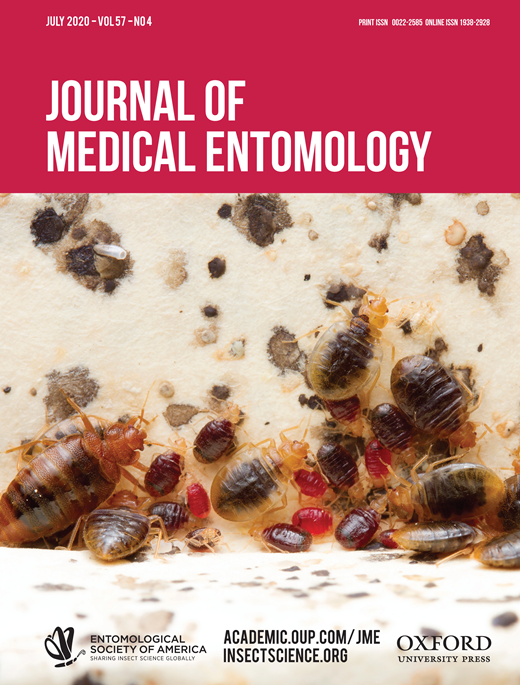Ver ítem
- xmlui.general.dspace_homeCentros Regionales y EEAsCentro Regional Patagonia NorteEEA BarilocheArtículos científicosxmlui.ArtifactBrowser.ItemViewer.trail
- Inicio
- Centros Regionales y EEAs
- Centro Regional Patagonia Norte
- EEA Bariloche
- Artículos científicos
- Ver ítem
Aerobic Metabolism Alterations as an Evidence of Underlying Deltamethrin Resistance Mechanisms in Triatoma infestans (Hemiptera: Reduviidae)
Resumen
Triatoma infestans (Klug, 1834), the main vector of Chagas disease in Latin America, is regularly controlled by spraying the pyrethroid deltamethrin, to which some populations have developed resistance. The three main mechanisms of resistance are 1) metabolic resistance by overexpression or increased activity of detoxifying enzymes, 2) target site mutations, and 3) cuticle thickening/modification. We use open-flow respirometry to measure real-time H2O
[ver mas...]
Triatoma infestans (Klug, 1834), the main vector of Chagas disease in Latin America, is regularly controlled by spraying the pyrethroid deltamethrin, to which some populations have developed resistance. The three main mechanisms of resistance are 1) metabolic resistance by overexpression or increased activity of detoxifying enzymes, 2) target site mutations, and 3) cuticle thickening/modification. We use open-flow respirometry to measure real-time H2O loss rate (V˙ H2O) and CO2 production rate (V˙ CO2), on nymphs from susceptible and resistant populations before and after exposure to the insecticide to understand the underlying mechanisms of resistance in live insects. Lack of differences in V˙ H2O between populations suggested that cuticular thickness/composition is not acting as a relevant resistance mechanism. Similarly, there was no difference in resting V˙ CO2, suggesting a trade-off between resistance mechanisms and other physiological processes. The increment in V˙ CO2 after application of deltamethrin was similar in both populations, which suggested that while enhanced enzymatic detoxification may play a role in resistance expression in this population, the main mechanism involved should be a passive one such as target site mutations. Open-flow respirometry provided useful evidence for evaluating the mechanisms involved in deltamethrin resistance. Using this technique could improve efficiency of scientific research in the area of insecticide resistance management, leading to a faster decision making and hence improved control results.
[Cerrar]

Autor
Rolandi, Carmen;
Roca-Acevedo, Gonzalo;
Schilman, Pablo Ernesto;
Germano, Monica Daniela;
Fuente
Journal of Medical Entomology : art: tjaa099 (Junio 2020)
Fecha
2020-06
Editorial
Entomological Society of America
ISSN
1938-2928
0022-2585
0022-2585
Formato
pdf
Tipo de documento
artículo
Palabras Claves
Derechos de acceso
Restringido
 Excepto donde se diga explicitamente, este item se publica bajo la siguiente descripción: Creative Commons Attribution-NonCommercial-ShareAlike 2.5 Unported (CC BY-NC-SA 2.5)
Excepto donde se diga explicitamente, este item se publica bajo la siguiente descripción: Creative Commons Attribution-NonCommercial-ShareAlike 2.5 Unported (CC BY-NC-SA 2.5)

